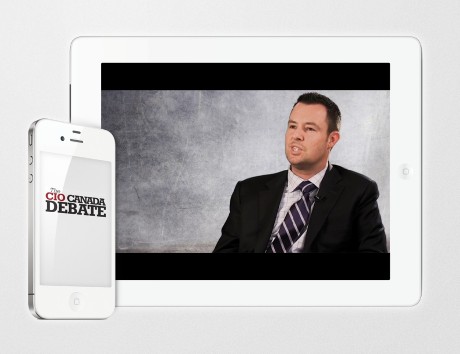The aim of many brands big and small right now is on the business becoming social or becoming a social enterprise. Let’s stop here for a minute and focus on the term “social business” instead, an adjunct to social media that educates and instills the proper training, policies and practices to be able to participate out there in the real world where your social customer’s first line of offense in a complaint is to take to Facebook or Twitter.
Not to worry, there is no blue moon on the horizon nor is Hell freezing over – social media policy, read guidelines, may not be a bad thing after all as they’ll help expand the organization’s efforts in truly becoming a social enterprise. Now at the sake of sounding like a broken record – repeat after me – by implementing social business practices can the brand give itself an authentic brand identity.
And here’s the fine print, an authentic identity relegated to not just one social media manager but potentially to every employee within the brand. The goal of social media is engagement and one tactic is to engage with senior taste-makers and influencers even negative naysayers to win them over to become staunch brand loyalists – but what about your own employees within the organization – are they not your brand’s advocates as well?
The New York Times social media strategy, fodder for every journalist having reached near mythic proportions in terms of all-time best one liners, can be boiled down to simply ‘Don’t Be Stupid’. Bold, yes, given that journalists might not respond all too well to a list of 20 do not violate or else rules.
Granted, investigative reporting on a story is one thing, and effectively getting your brand preferred over the competition is another ball of wax all together, but this is where social media can have the most impact by training and providing clear guidelines to your employees on how to engage with customers and create advocacy can have the most impact. Just have a look at Dell’s SMaC training to realize that social media as a tool can be used to create long lasting and meaningful relationships with customers and equally bolster internal collaboration and knowledge management. It becomes a Venn diagram of sorts – the internal cooperation builds external customer advocacy and vice-versa.
Have you ever signed a NDA? You’ll appreciate the fact that much like entering into a legally binding agreement, social media done wrong can and should have repercussions, which is why the Dell SMaC training is such a good example to follow… Want to get involved in social media as a Dell brand ambassador? You’ll first need to complete their certification course. Once certified you’ll then be embedded as part of Dell’s social media team within the greater social media team matrix with clear guidance on what to discuss, promote and most important of all – how to engage with customers, advocates and naysayers online.
Let me be clear and I’m not being pedantic here, simply reinforcing that without a clear and present social media policy or guideline for the organization – the brand opens itself up to the very real danger of becoming ensnared in social risk management. Yes, no one ever said “being social” was easy, another subset of social media….social risk management is an emerging field and one that becomes critical to managing the brand.
How? The Altimeter Group’s report in August, Guarding The Gates: The Imperative for Social Media Risk Management identifies the biggest risk social media, read social media engagement by one or many employees, poses is towards a brand’s reputation (remember the infamous tweet by Chrysler’s official twitter account dropping the F-bomb in an tweet from the automaker’s PR agency?), followed by the release of confidential company information, with the loss of intellectual property (IP) and legal / regulatory / compliance issues coming in third and fourth respectively and to round out the top five threats being disclosure of personal data (remember, there’s a fine line in representing the brand and you being the spokesperson for the brand).
Train your staff to be able to engage within social media channels but also have them extend that approach and have them further the internal collaboration and knowledge management – put disparate individuals together within the same social media team. Pair up R&D with Finance, Legal with HR – I’m no Pied Piper but do not rely on just the Marketing Dept to engage with social media.
This may be difficult since “brand”, that is a VP of Brand can easily come in and nix any focus on social engagement that falls out of marcom so make sure you have Executive buy-in before tackling this organizational, bring in legal too, make all the executive decision makers comfortable with the notion that it takes a village to raise a social media brand – you need different employees social media enabled to represent your brand and engage with the social customer on their terms and their platforms whether it’s Instagram, Pinterest, blogs, Facebook, LinkedIn or YouTube. Bring your company together by holding an un-Conference to focus on the in-house talent and collaborative participation from your employees to bring out expertise and re-target that knowledge and experience into tangible lessons-learned.
Once you have the exec buy-in and training in place do then focus on ways to safeguard the brand’s reputation and confidential information and IP – create a IAME feedback loop for your social media teams and matrix:
Identify social media risks with the lens of possible information leaks / brand reputation damage
Assess and prioritize those risks with the understanding of the company’s limited resources
Mitigate and manage those risks to reduce the impact of brand damage, IP loss, compliance issues
Evaluate your efforts and analyse emerging risk against your mitigation efforts
The IAME loop is not meant to take the fun nor originality of your social media efforts, voice or employee participation – it makes the real the fact that social media is a means of engagement – that engagement, at least coming from the brand should not divulge company intellectual property or ever, hopefully hurt the brand.
Social Media is about relationships – much like dating – how much of yourself do you share with your date before crossing over to long-term relationship status – the build-up is slow, exciting, heart-wrenching at times yet all the while, to keep relationships going there needs to be an element of trust – so for brands: trust your employees and employees – be cognizant that you should not do anything purposefully to hurt the reputation of your company. Mistakes will be made, if made move on, forgive and forget and don’t forget to try new things to keep the relationship fresh.






